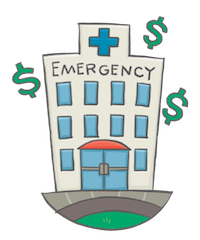
Your efforts to give patients same-day appointments won't succeed until you address three critical issues.
Fam Pract Manag. 2013;20(5):12-17
Author disclosures: no relevant financial affiliations disclosed.
Advanced-access scheduling (also called open-access, same-day, or patient-centered scheduling) has been highly touted for more than 10 years. The classic Family Practice Management article “Same-Day Appointments: Exploding the Access Paradigm” provided the theory and strategy for implementing advanced access.1
Some practices have had great success in improving access with this model, while others have failed. A study of six primary care practices found that five of the six improved access but none achieved same-day access, and the improvements were often not sustainable over time.2 A systematic review of the literature on advanced access concluded that most practices can reduce waiting times but few accomplish same-day or next-day access. Moreover, patient satisfaction did not increase and in some cases decreased even when access improved.3
What is the key to successfully improving access? Practices that have implemented same-day access, and have sustained it over a number of years, have reduced demand and increased capacity by working on the building blocks required to provide prompt access to patients. These building blocks include panel size management, continuity of care, and the development of teams that add new capacity to deliver care without pushing work back to the physician.4
Panel size management. To keep demand for care in check, practices with sustainable open access models start with creating manageable panel sizes, ideally empaneling patients to a team. If panels are too large, then the demand for care will overwhelm the capacity to provide care – even with staff members assisting physicians in providing care – and prompt access will be impossible to achieve. (For more information on panel size management, see the reading list.) To create more capacity to manage panel size, practices may need to adopt strategies such as email encounters, group visits, nurse visits, and health coach visits. Practices can also better manage their panels by replacing multiple low-level visits with one robust visit, and by increasing the time between follow-up visits when medically appropriate.
Continuity of care. As often as possible, patients should be seen by the physician or other team member to whom they are empaneled. Continuity of care not only improves patient outcomes but also helps to reduce demand for care since patients seeing a different physician often receive another appointment with their own physician, thereby filling two appointment slots rather than one. In some practices, physicians have agreed to overbook their own patients as needed, but not patients empaneled to other physicians, to improve continuity.
FURTHER READING
For more ideas on improving patient access to care, visit the FPM “Access to Care” topic collection. It provides links to each of the following articles:
ADVANCED ACCESS
OTHER STRATEGIES
MANAGING CARE AFTER HOURS
Team care. Teams have the potential to add capacity if physicians write standing orders that empower nurses or medical assistants to handle routine chronic and preventive care tasks without involving the physician. A number of innovative primary care practices have been successful in implementing and sustaining capacity-increasing teams that are financially viable. One example is the practice of Peter Anderson, MD, in Newport News, Va., whose productivity and revenue increased dramatically, while also improving physician and staff satisfaction, after he implemented a team model of two clinical assistants per physician. Anderson described his model in the 2008 FPM article “A New Approach to Making Your Doctor-Nurse Team More Productive.”5
Try your luck at getting an appointment
We offer an interactive exercise to help family medicine practices construct the necessary building blocks to succeed in improving access to care. These building blocks are entirely consistent with those of the patient-centered medical home. The exercise, which follows a fictitious patient, Lucy, as she tries her luck at getting an appointment with her family physician, can be accessed below.
Lucy Tries Her Luck at Getting an Appointment
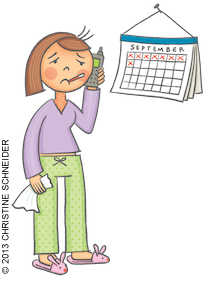
Directions: First, read about Lucy's problem. Then, select a medical practice, starting with number 1, and see where it might ultimately lead Lucy – to the emergency room or back home. After you accompany Lucy on her journey, reflect on your own journey of access using the questions at the end of the exercise.
It is Monday. Lucy is not feeling well today. She has a sore throat, aches and pains, and an itchy rash on her neck and chest. Lucy wants to see her family physician as soon as she can.
The type of access model used at the clinic will determine whether 1) Lucy is lucky (she gets an appointment to see her own family physician on the same day she calls and is then able to return home) or 2) Lucy is unlucky (she cannot see any family physician for weeks and must go to the emergency department).
Follow Lucy on her access journey to find out whether she gets the best possible care, when she gets an appointment, and whether she sees her own family physician.
1 JUST DROP BY CLINIC

This clinic does not make appointments. Patients who want to be seen must drop in and wait. They may be seen that day, or they may be turned away to come back tomorrow.
Lucy shows up at the clinic at 8 a.m. There is already a very long line. Since Lucy is not triaged as an urgent case, she waits for hours. She is unlucky and is asked to return tomorrow. Lucy cannot return tomorrow because she cannot take another day off work.
Next step: To avoid the emergency department (ED), start over at the next clinic.
2 FILLED FOR WEEKS CLINIC
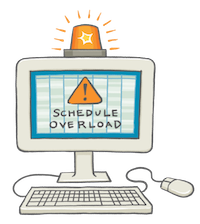
Lucy calls the clinic and finds out that the next time she can get in to see her family physician is six weeks from today. At this clinic, appointments are made up to three months in advance at the patient's or family physician's request. All family physicians' schedules are filled for the next five weeks.
Lucy explains her symptoms, hoping to get a same-day appointment or get squeezed in, but she is not offered an appointment. Furthermore, the clinic does not offer the opportunity to email or talk to her family physician on the phone.
She is told that if she feels she needs urgent assistance, she should go to the emergency department.
Next step: To avoid the emergency department, start over at the next clinic.
3 SQUEEZED IN WITH DOCTOR WHO CLINIC
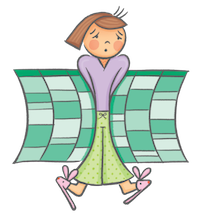
Lucy calls the clinic and is told that her family physician's next available appointment is in five weeks. She pleads her case on the phone. She tells the clerk she can barely swallow and that she is scratching so hard her skin is raw. The clerk tells Lucy to come in to the clinic and she will be squeezed in between appointments.
In this model, patients needing urgent care are squeezed in to be seen by overbooked family physicians. Often, they do not see their own physician. Lucy arrives at the clinic at 9 a.m. and waits until 12:15 p.m. The clinic closes for lunch at noon, but the overbooked and overworked physicians are continuing to see patients.
Lucy finally sees a physician she doesn't know, and her acute needs are met. She is told to follow up with her regular family physician. On her way out, she stops at the front desk to make an appointment, but it is 12:30 p.m. and the clerk is at lunch. Lucy never makes the follow-up appointment.
Next step: To try for a better outcome, start over at the next clinic.
4 FIRST COME, FIRST SERVED CLINIC
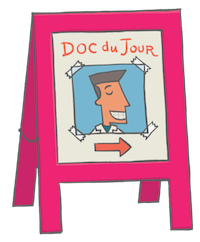
Lucy calls her clinic as soon as it opens. She knows that six slots in the morning and six slots in the afternoon are left open each day for urgent appointments or drop-ins. It would take weeks at this clinic for an appointment with her family physician.
If she is lucky, Lucy will see the “doc of the day,” most likely a physician she doesn't know.
She can't get through to the clerk on the phone, so she decides to take her chances and walk-in. At this clinic, the lone registered nurse must spend several hours a day triaging patients to determine who needs the open slots. She regretfully tells Lucy that all the open slots have been filled and that she can try again tomorrow. Lucy cannot wait until tomorrow.
Next step: To avoid the emergency department, start over at the next clinic.
5 BUSY TONE CLINIC
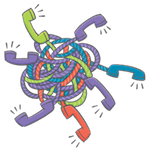
This clinic initiated advanced access by telling patients that starting July 1 there will be no more appointments made in advance. Patients were told to call in the morning to get a same-day appointment. No further instructions were offered.
Lucy calls repeatedly on Monday morning and gets a busy tone. On her tenth try, she hears a recording about the new policy. After 25 minutes of calling, she gives up.
Next step: To avoid the emergency department, start over at the next clinic.
6 BACK TO THE BACKLOG CLINIC
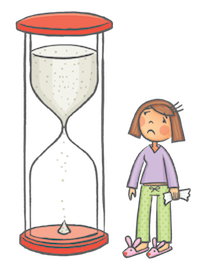
Three months ago, this clinic initiated advanced access by working down the backlog until the third next available appointment was three days. Unfortunately, the clinic made no other adjustments to increase capacity (e.g., email encounters, group visits, nurse visits, or health coach visits) or to reduce demand (e.g., increasing the visit interval when medically appropriate).
Lucy's family physician is a full-time provider with a panel of 2,500 patients. Since the physicians care for their panels without a team, the demand for appointments at the clinic exceeds its capacity, and the backlog builds back up. Three months after the clinic began advanced access, the third next available appointment is in five weeks.
Lucy calls on Monday and hopes she is lucky enough to get an appointment that day or at least that week. She cannot. She is unlucky, as is everyone in the practice who slaved away the extra hours to work down the backlog.
Next step: To avoid the emergency department, start over at the next clinic.
7 BURNOUT CLINIC
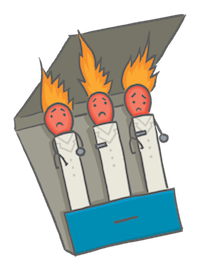
This clinic does not make appointments more than two weeks in advance. As a result, the third next available appointment is never greater than 14 days in the future. Slots are filled in advance from 8 to 10 a.m., and the rest are filled the same day or the previous day.
This clinic has committed itself to meet the demand; anyone who wants an appointment gets one. To meet the demand, the clinic sets the panel size at 2,200 per full-time physician. Capacity is increased by making physicians see more patients in a day than they should. The physicians and staff are overworked.
Lucy calls the clinic on Monday morning and is able to get through to the receptionist. She pleads her case and is given an appointment at 10:30 a.m.
Lucy is one of the 30 to 35 patients her family physician sees per day. Lucy shows up at her 10:30 a.m. appointment and is told her physician is running behind. At 11:30 a.m., she sees her physician who apologizes for running late. In fact, this physician never leaves the office before 7:30 p.m.
Lucy feels rushed and doesn't tell her physician about her rash. The next morning, after tossing and turning all night, she debates whether to return to the clinic for another walk-in appointment.
Next step: To try for a better outcome, start over at the next clinic.
8 OLD WAYS OF CARING CLINIC
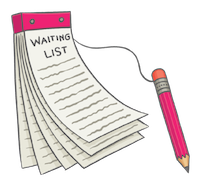
Lucy calls the clinic to make an appointment. The clinic does not make appointments more than two weeks in advance. The third next available appointment is never greater than 14 days. Slots are filled in advance from 8 to 10 a.m., and the rest are filled the same day or the next day. All visits with physicians are face-to-face.
Her family physician is a full-time provider with a panel size of 1,200. When physicians reach the 1,200 mark, the clinic closes the panel to new patients. This model is working very well for those patients who have an assigned primary care physician. Most of the time the clinic is not taking new patients to keep the panel size at 1,200.
However, the clinic now has a waiting list of 2,000 people who want to become clinic patients. The clinic cannot meet the demand coming from the many other people in the community who need a primary care physician.
Lucy is lucky to have access to a clinic. Lucy is able to get an appointment that afternoon.
Next step: To try for a better outcome, start over at the next clinic.
9 NEW WAYS OF CARING CLINIC
In this clinic, appointments are not made more than two weeks in advance. Morning slots, from 8 a.m. to 12 p.m., are filled in advance. The remaining slots are filled the same day or the previous day. As a result, the third next available appointment is never greater than 14 days in the future.
Lucy's family physician has a panel size of 1,500. She can't always get an appointment to see her on the same day, but she knows she has other options for receiving care – phone calls and email encounters with her physician, a group visit to talk about her diabetes, or an appointment with a nurse or a health coach for medication reconciliation. These new ways of caring for patients increase the clinic's capacity to see patients and allow panel sizes to increase.
Lucy emails her physician and gets a reply in an hour. Her physician advises her to come in that afternoon. Lucy is lucky and gets an appointment at 3:30 p.m. to get the acute care she needs.
Next step: To try for a better outcome, start over at the next clinic.
10 SHARE THE CARE CLINIC
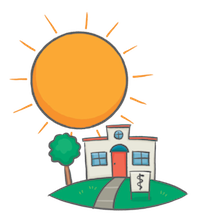
When Lucy calls for an appointment, the clinic tells her she can come in that afternoon to see her family physician. At this clinic, 25 percent of slots are saved for same-day appointments (in the afternoon) and 25 percent for those who want to make an appointment in the same week (morning slots). The other half are reserved for appointments scheduled in advance. Lucy was aware of the clinic's policy because they mailed her a letter explaining the changes effective July 1. On this date, the clinic stopped making appointments more than two weeks out and began scheduling two additional people to answer phones from 8 a.m. to 10 a.m. when most calls occur.
The clinic has also formed stable teamlets to care for each patient panel. The teamlet consists of one physician, one nurse, and two medical assistants who often integrate members from the larger clinic team – pharmacist, social worker, nutritionist, etc. Lucy is happy to know that she has a whole team available to care for her. Utilizing standing orders, the nurses care for patients with uncomplicated upper respiratory infections, urinary tract infections, bronchitis, and sinusitis. Health coaches are available for patient education and behavior change counseling, while pharmacists can titrate medications and serve as the main caregiver for patients with uncomplicated diabetes, hypertension, and cholesterol. Physical therapists see all patients with musculoskeletal problems including low back pain and determine whether those patients need to see a physician. True team-based care has expanded the clinic's capacity to see patients, allowing physicians to work reasonable hours and provide same-day and same-week care for a panel of 2,200 patients per full-time-equivalent physician.
The clinic has arranged with its payers to receive a care management fee so there is no financial penalty for offering e-visits and visits by nonphysician team members. Pay-for-performance bonuses are shared with the entire team.
Lucy made an appointment for 4:30 p.m., was seen by her physician at 4:35 p.m., and was treated for all of her acute needs. In addition, the medical assistant checked to make sure she had all her chronic and preventive care services taken care of.
In this clinic, everyone – each patient, physician, and staff member – is lucky.
Next step: Proceed to home.
HOME
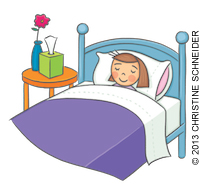
REFLECTION QUESTIONS
Which of the models described in the exercise most resembles your current practice?
What improvements in access do you think your practice could achieve in the next 12 months?
What would be required to realize those improvements?
